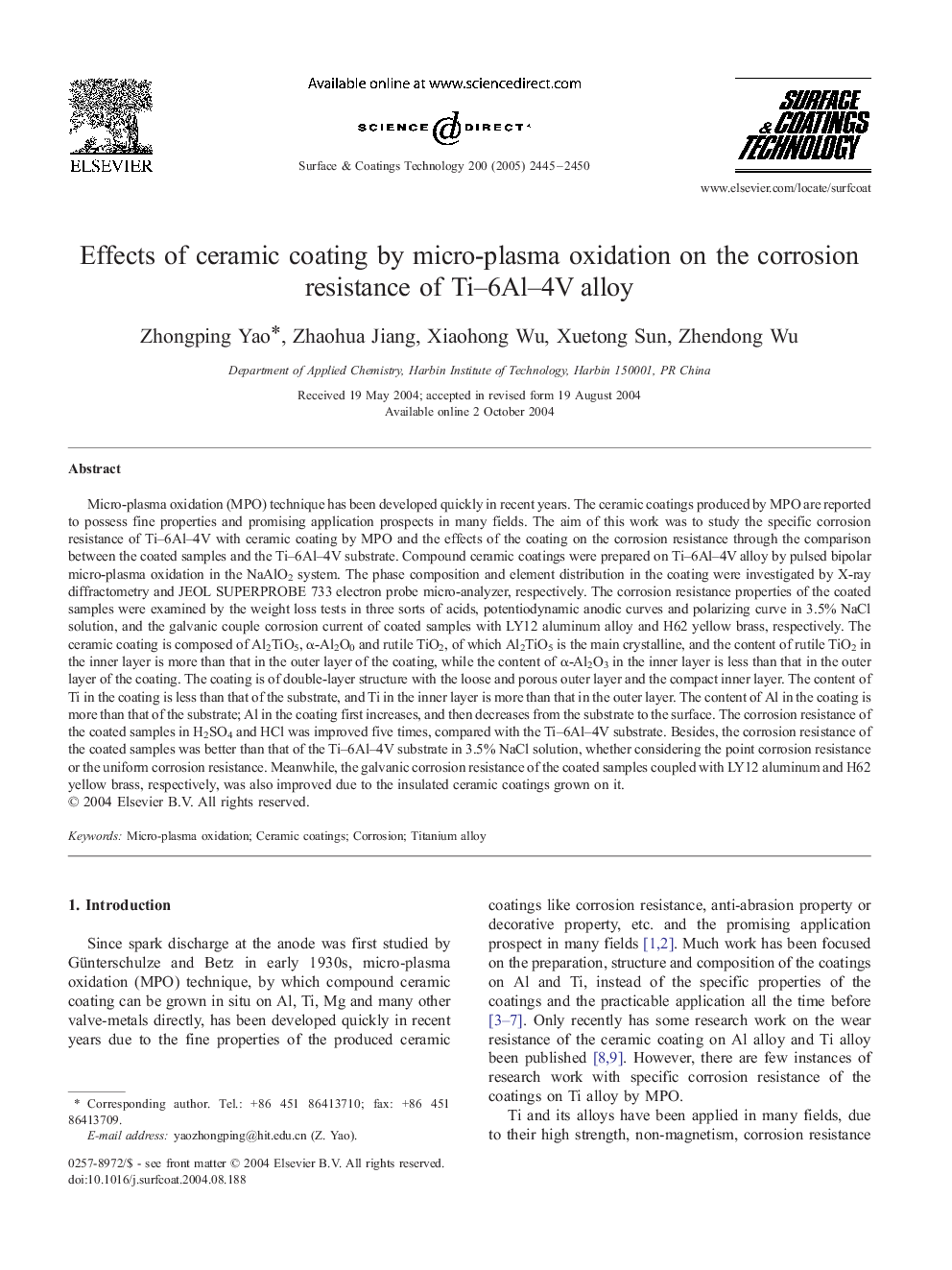| کد مقاله | کد نشریه | سال انتشار | مقاله انگلیسی | نسخه تمام متن |
|---|---|---|---|---|
| 1663465 | 1008469 | 2005 | 6 صفحه PDF | دانلود رایگان |

Micro-plasma oxidation (MPO) technique has been developed quickly in recent years. The ceramic coatings produced by MPO are reported to possess fine properties and promising application prospects in many fields. The aim of this work was to study the specific corrosion resistance of Ti–6Al–4V with ceramic coating by MPO and the effects of the coating on the corrosion resistance through the comparison between the coated samples and the Ti–6Al–4V substrate. Compound ceramic coatings were prepared on Ti–6Al–4V alloy by pulsed bipolar micro-plasma oxidation in the NaAlO2 system. The phase composition and element distribution in the coating were investigated by X-ray diffractometry and JEOL SUPERPROBE 733 electron probe micro-analyzer, respectively. The corrosion resistance properties of the coated samples were examined by the weight loss tests in three sorts of acids, potentiodynamic anodic curves and polarizing curve in 3.5% NaCl solution, and the galvanic couple corrosion current of coated samples with LY12 aluminum alloy and H62 yellow brass, respectively. The ceramic coating is composed of Al2TiO5, α-Al2O0 and rutile TiO2, of which Al2TiO5 is the main crystalline, and the content of rutile TiO2 in the inner layer is more than that in the outer layer of the coating, while the content of α-Al2O3 in the inner layer is less than that in the outer layer of the coating. The coating is of double-layer structure with the loose and porous outer layer and the compact inner layer. The content of Ti in the coating is less than that of the substrate, and Ti in the inner layer is more than that in the outer layer. The content of Al in the coating is more than that of the substrate; Al in the coating first increases, and then decreases from the substrate to the surface. The corrosion resistance of the coated samples in H2SO4 and HCl was improved five times, compared with the Ti–6Al–4V substrate. Besides, the corrosion resistance of the coated samples was better than that of the Ti–6Al–4V substrate in 3.5% NaCl solution, whether considering the point corrosion resistance or the uniform corrosion resistance. Meanwhile, the galvanic corrosion resistance of the coated samples coupled with LY12 aluminum and H62 yellow brass, respectively, was also improved due to the insulated ceramic coatings grown on it.
Journal: Surface and Coatings Technology - Volume 200, Issue 7, 21 December 2005, Pages 2445–2450